


Articles
- Articles
- Bartonella
- Coinfections
- Conditions Caused by Tick-borne Illness
- Environmental Illness
- General Information
- Hormones
- Lyme Disease
- Mold Exposure
- Nutrition
- Patient Resources
- Recommended Videos
- Red Light Therapy
- Treatments
- Uncategorized
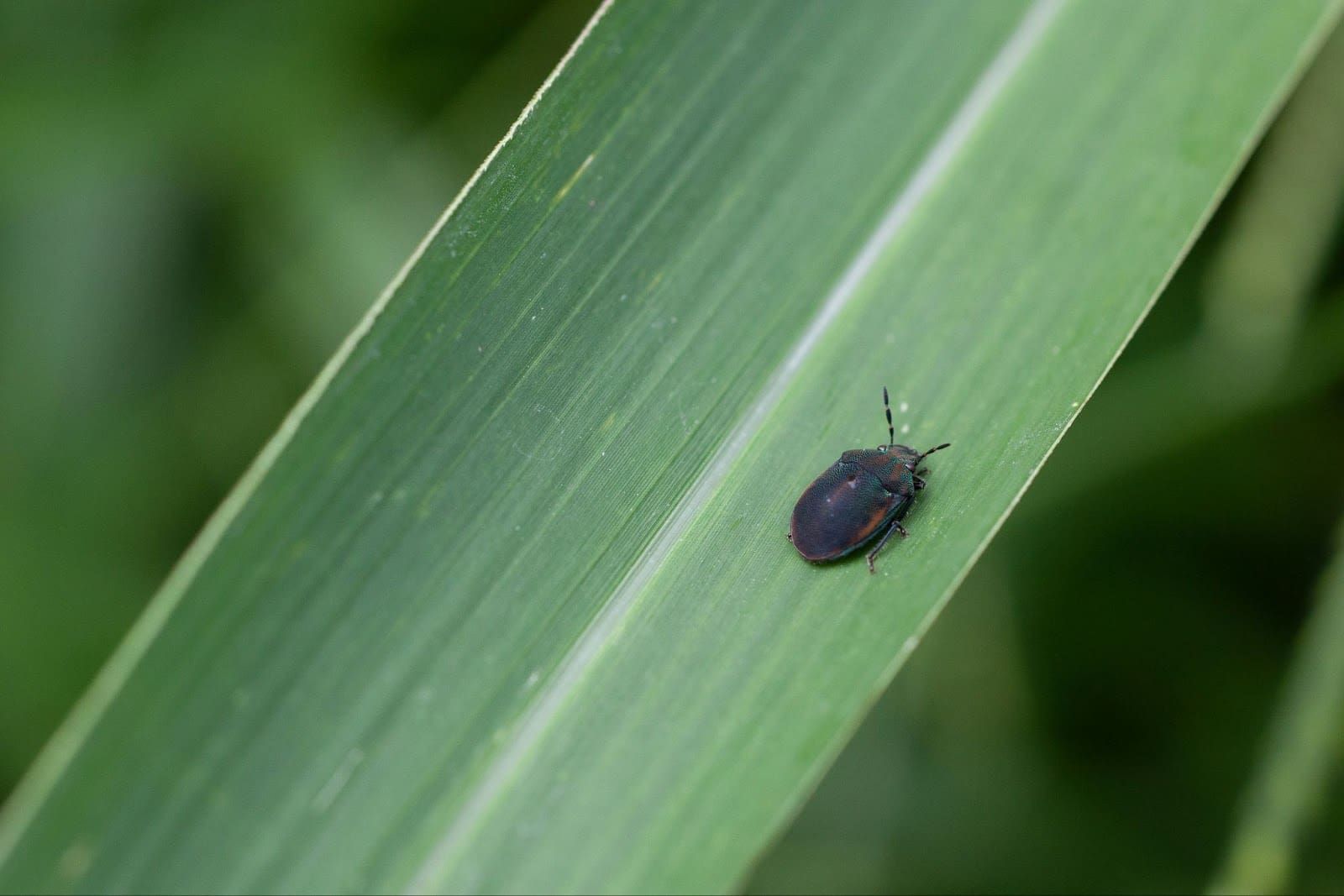
Adult Lyme Disease
Living with Adult Lyme Disease: What You Need to Know About Symptoms and Treatment
Adult Lyme disease is a complex and often misunderstood illness that has surged in recent years due to factors like climate change, urban development, and a growing deer population. These conditions have led to increased tick exposure year-round. Accurate testing tools are crucial for detecting Borrelia bacteria in blood and urine, which causes the fluctuating symptoms of Lyme disease.
What is Adult Lyme Disease?
Adult Lyme disease refers to the manifestation of Lyme disease in individuals over the age of 18. While Lyme disease is commonly associated with children and adolescents, adults can be just as susceptible. In adults, Lyme disease can be mor…
Alkalizing Foods
The alkaline diet is based on the idea that replacing acid-forming foods with alkalizing foods can improve your health. The body fluids of healthy individuals are naturally alkaline meaning they have a high pH, whereas the body fluids of the chronically ill tend to be more acidic with a low pH. Most degenerative diseases attributed to aging, cancer, osteoporosis, and heart disease have all been scientifically linked to calcium and other mineral deficiencies that result in the body fluids becoming acidic. Acidosis is a common factor in over 150 degenerative diseases. Adopting more alkalizing foods into your diet can have positive impacts on your overall health and help you to along the detoxification process.
Put simply, pH is a mea…
Alzheimer’s Disease
Alzheimer’s disease is a neurodegenerative disease that may have genetic (APOE4) and environmental influences on its manifestation in 60-70% of cases. The loss of cognitive function generally starts slowly and progressively gets worse with time and age. The disease is characterized by the development of amyloid plaques in the brain, neurofibrillary tangles, and neuronal degradation in the brain. It affects about 6% of people over 65 years of age and is expected to increase substantially by 2030. Dr. Alan MacDonald, a pathologist found that 7 out of 10 brains examined post autopsy were positive for Borrelia, the bacteria that causes Lyme disease. His findings have not been well accepted by mainstream medicine, and he continu…
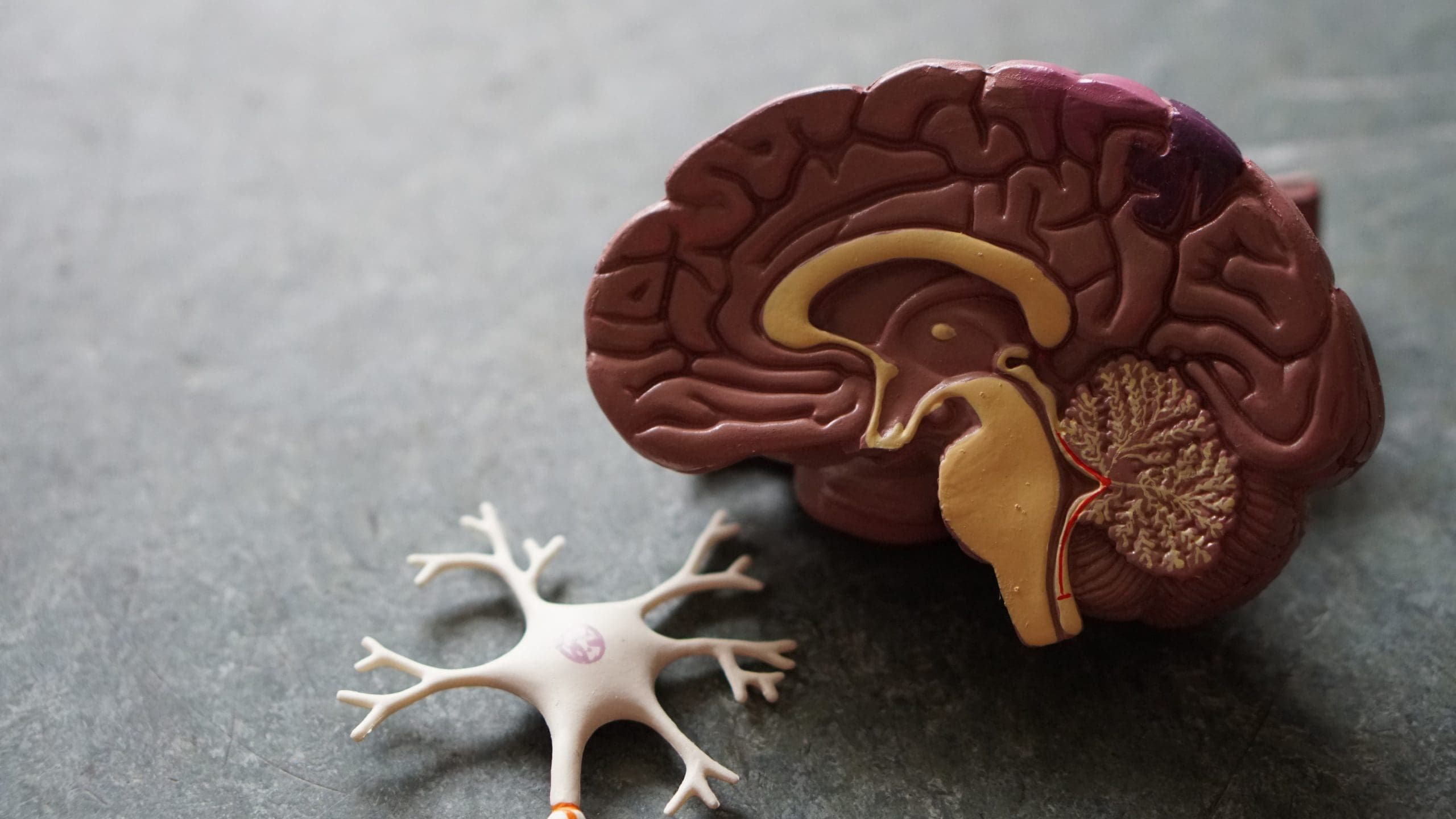
Ammonia Toxicity in the Brain of Tick-Borne Disease Patients
Most patients with neurological Lyme Disease and coinfections (i.e., MS, ALS, Parkinson’s Disease, Autism), have elevated levels of ammonia toxicity in the brain which is neurotoxic. This is due to the fact that the spirochete, Borrelia burgdorferi, produces urease enzymes, and ammonia accumulation results. Sometimes ammonia levels will be elevated in the blood, and many times they are also normal. This is because the ammonia concentration is localized in specific tissues (brain), where the concentration is not high enough to be detected in the blood. But that doesn’t mean that ammonia is not causing destruction. It is VERY neurotoxic and needs to be removed with herbal supplements and diet adjustments.
A diet rich in arginine (an amino…
Andropause
Andropause is the natural male equivalent of menopause, characterized by a declining state in DHEA and testosterone levels, beginning as early as age 30. When a man has chronic Lyme Disease, persistent inflammation and infection cause significant dysfunction in the hypothalamic-pituitary axis, which ultimately leads to the decreased production of the androgen steroid hormones.
Symptoms of low DHEA:
Decreased energy
Decreased libido
Decreased muscle strength
Depression
Difficulty dealing with stress
Fatigue
Irritability
Inability to concentrate
Insomnia
Symptoms of low testosterone:
Anxiety
Depression
Low libido
Inability to maintain erection
Poor memory
Inability to multitask
Irritab…
Anti-Inflammatory Diet
Inflammation is the body’s normal response to infections, diseases, injuries, and anything it considers harmful. It is important to lower inflammation during treatment because this will help fight against toxic compounds, pathogens, and damaged cells build up in organ tissues. Certain foods are known to cause inflammation in the body. One of the fastest ways to decrease inflammation is to adopt an anti-inflammatory diet.
Fruits and vegetables are particularly important in the defense against inflammation. Vegetables in the allium family include garlic, scallions, onions, Chinese chives, and leeks.
Cruciferous vegetables include broccoli, cabbage, cauliflower, mustard greens, and brussel sprouts.
Phytonutrients are found…
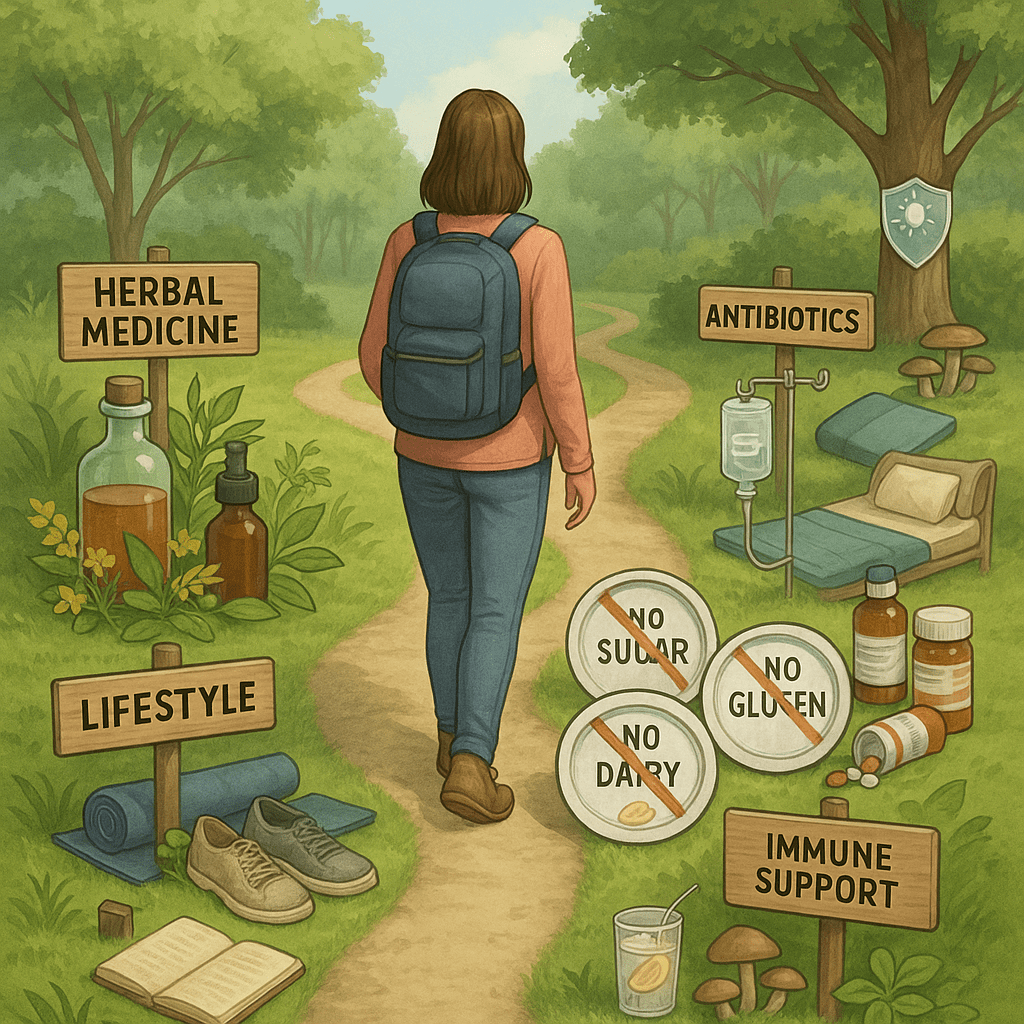
Antibiotic Controversy
In the 18+ years that Dr. Marra has been practicing tick-borne disease illness, there has been great controversy over the use of antibiotics in the treatment of these stealth and persistent infections. She doesn’t think the answer to this controversy is any easier today than it was 20 or 40 years ago. However, over the years, she has seen a trend in the degree of illness that presents in the practice. Patients are MUCH sicker now than they were 20 years ago when she was practicing in Connecticut, and most patients have multiple infections.
In her own journey nearly 14+ years ago battling Lyme Disease and Bartonella, she chose to take an Integrated Medicine approach to healing because she felt that it was her best chance of eradicating t…
Autoimmune Disease
Frequently we see autoimmune diseases associated with Lyme Disease and coinfections such as Multiple Sclerosis, Lupus, Hashimoto’s Thyroiditis, Scleroderma, Graves Disease, Celiac Disease, etc. Essentially any tissue in the body can fall prey to autoimmune disease if the autoimmunity is driven by infection.
When pathogenic infections invade tissues, the bacteria produce LPS (lipopolysaccharides) which are found on their outer cell membrane and promote inflammation. These molecules are produced and fool the host’s immune system into thinking that there is a foreign invader. The body naturally mounts an immune response, but the response is against its own tissue, yielding autoimmune disease.
In 18 years of practice, most of my patients…
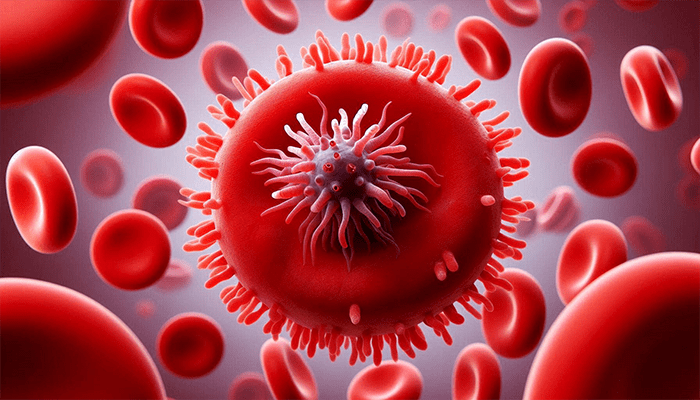
Babesiosis
Babesiosis, often a co-infection of Lyme Disease in humans, was first identified by Victor Babes in the late 19th century in Romanian cattle and the disease at that time was coined “Red Water Fever.” However, Babesia infection in humans was not confirmed until 1956 in a Yugoslavian farmer.
Babesia is a protozoan intracellular red blood cell parasite quite similar to malaria and is a worldwide emerging zoonotic disease. There are about 100 known species of Babesia that infect livestock animals and rodents. However, the three currently known species causing human disease, B. microtii, and B. duncani (formerly WA1 and first identified in Washington state but found throughout the United States), and…

Bartonella and Scleroderma
Scleroderma and Bartonella… Is there a connection?
Dr. Marra has been treating patients with tick borne illness since 1999 in both Westport Connecticut and Seattle Washington. She has had two patients with severe Raynaud’s Syndrome, a Scleroderma diagnosis, and a positive Bartonella henselae serology test, one from each coast.
Dr. Marra does not think that this is a coincidence as Bartonella is known to reside in the vascular system along the inside of the vessel endothelium. She strongly suspects that Raynaud’s Syndrome and Scleroderma could have an infectious etiology that has been overlooked by the medical community because Bartonella is just now considered an emerging zoonotic infection. There is sparse scientific literature on B…
Bartonella Metabolic Syndrome
Metabolic Syndrome
Metabolic Syndrome is a collage of risk factors that are associated with an increased risk of stroke, type 2 diabetes, coronary artery disease, and peripheral artery disease. About 30 million Americans suffer from the following symptoms:
Central abdominal obesity
Fasting glucose of greater than 100mg/dL
BP greater than 130/85
Low HDL
Fasting triglycerides greater than 150mg/dL
Risk factors for developing Metabolic Syndrome include:
Increased abdominal girth
Insulin resistance
Hypertension
Hyperlipidemia
Genetics
Infections
Bartonella or “cat scratch fever”
What is Bartonella or “Cat Scratch Fever”?
Bartonella, commonly known as cat scratch fever, is an infectious disease caused by a group of bacteria belonging to the Bartonella genus. Among the more than 20 known species of Bartonella, Bartonella henselae and Bartonella quintana are the most commonly linked to human infections. Cat scratch fever often results from the scratch or bite of an infected cat, which is why it is named after cats.
For a reliable Bartonella diagnosis, blood tests for antibodies can detect species like B. henselae and B. quintana, but newer testing methods like fluorescent in situ hybridization (FISH) now allow more accurate detection of various Bartonella species. Dr. Marra has been treating patients with since 1…
Bioidentical Hormone Treatment
BHRT, or bioidentical hormone treatment, is a method of balancing hormones that are naturally based using yams, soy, or peanut oil. It IS NOT the use of synthetic hormones. For women and men, it is essential to maintain a healthy balance of hormones throughout life, as the estrogens (estrone, estradiol, and estriol), progesterone, DHEA, pregnenolone, and testosterone all play a significant role in maintaining health in differing doses and combinations at differing times in life. These hormones form an intricate web that interacts with many other hormones such as insulin, cortisol, and thyroid hormones, allowing for healthy bodily function.
Hormones regulate cellular functions and essentially direct the actions of either anab…
Biotoxin Illness & Your Environment
Biotoxin illness is an invisible disease that results from exposure to toxins such as mycotoxins including ochratoxin, aflatoxin, trichothecene, and gliotoxin among others, or toxins from microorganisms such as viruses, bacteria, fungi, and molds. Inflammagens such as endotoxins, mannans, proteinases, and even EMFs initiate a vicious cycle of inflammation called “chronic inflammatory response syndrome” coined by Dr. Shoemaker. Chronic inflammation is the result of the immune system’s desperate attempt to combat and remove these toxins, but the immune system becomes overactivated. Proinflammatory cytokines such as Il-6, Il-8, Il-10, and TNF alpha are released by immune cells, and upregulation of TGF-Beta 1 and C4a and VEGF occurs. The cytok…
Biotoxin Illness & Your Environment
Biotoxin illness is an invisible disease that results from exposure to toxins such as mycotoxins including ochratoxin, aflatoxin, trichothecene, and gliotoxin among others, or toxins from microorganisms such as viruses, bacteria, fungi, and molds. Inflammagens such as endotoxins, mannans, proteinases, and even EMFs initiate a vicious cycle of inflammation called “chronic inflammatory response syndrome” coined by Dr. Shoemaker. Chronic inflammation is the result of the immune system’s desperate attempt to combat and remove these toxins, but the immune system becomes overactivated. Proinflammatory cytokines such as Il-6, Il-8, Il-10, and TNF alpha are released by immune cells, and upregulation of TGF-Beta 1 and C4a and VEGF occurs. The cytok…
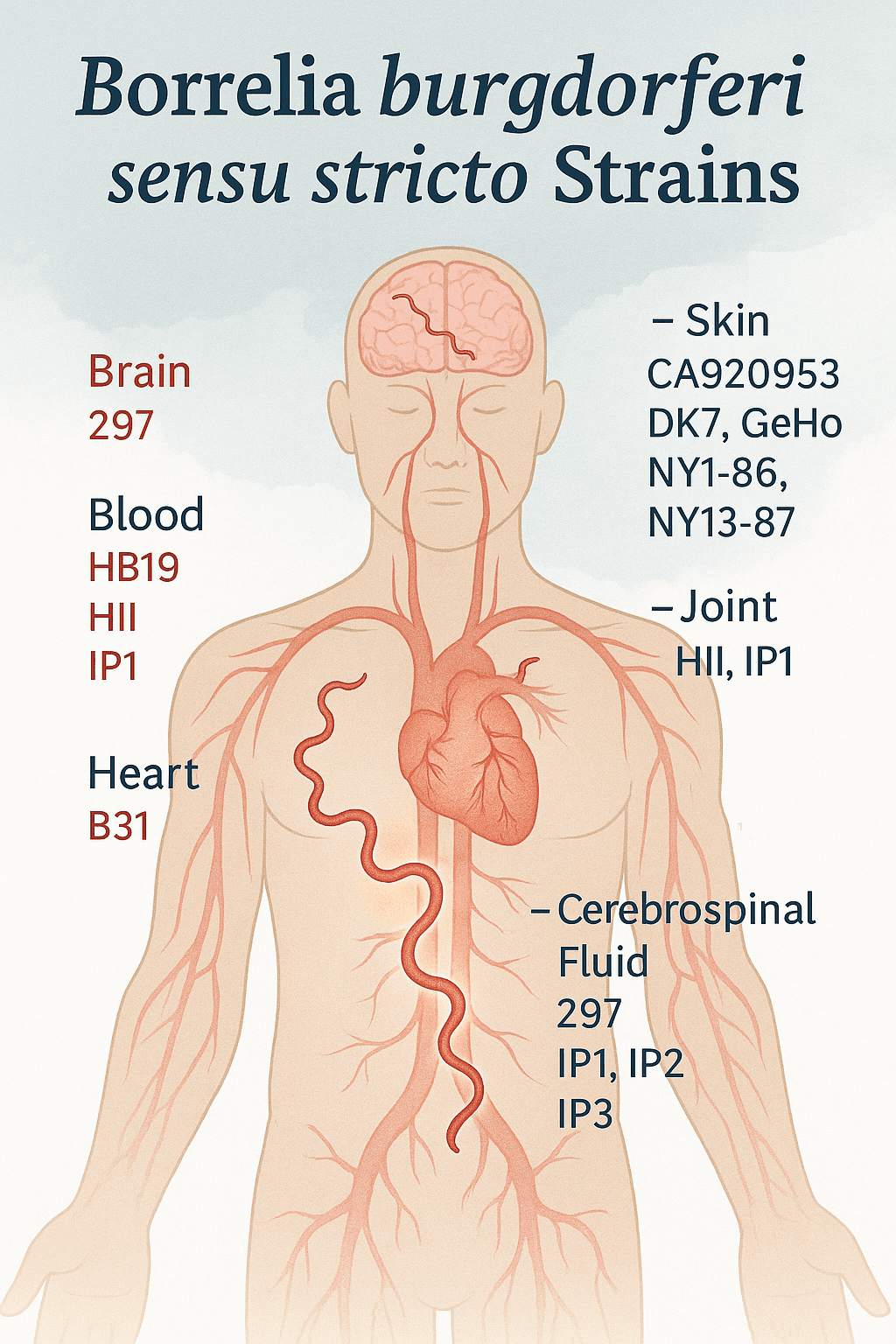
Borrelia burgdorferi Strains
Borrelia burgdorferi sensu stricto strains
Borrelia burgdorferi sensu stricto is the primary bacterial species responsible for Lyme disease in North America, though it is also present in Europe and elsewhere. Understanding its diverse strains is essential for improving diagnostics, treatment outcomes, and research into persistent infection.
This table lists key B. burgdorferi s.s. isolates collected from various sources—including ticks, animals, and humans—across multiple regions. Each entry includes the isolate identifier, country of origin, source organism, and the researcher or institution that provided the sample.
IsolateCountrySourceProvided by212 *FranceI. ricinusF. Milward297 *USA ConnecticutHuman CSFR.C. Johnson1352 *…
Brucellosis
Brucellosis is a zoonotic and tick-borne disease caused by the bacteria Brucella melitensis, and is an ancient disease, dating back to the 5th plague of Egypt around 1600 BC. Archeological excavation of Egyptian human bones dating around 750 BC demonstrated evidence of osteoarticular abnormalities that are often symptom complications from a Brucellosis infection. Brucella is found all over the world, especially in countries that rely heavily on agriculture, livestock, and dairy products such as Australia, Canada, Denmark, Finland, the Netherlands, New Zealand, Norway, Sweden, the United Kingdom, the Middle East, and central Asia.
David Bruce was the first scientist to identify the bacteria Brucella melitensis&…

Cannabis for Lyme Symptoms
If you are having trouble managing the symptoms of Lyme disease or other co-infections, medical cannabis may be a treatment option for you. The anti-inflammatory properties of medical cannabis have been linked to providing potential relief for some of the symptoms of Lyme disease, as well as numerous mental benefits including some relief from anxiety and depression. The pain-relieving properties of medical marijuana make it a viable treatment for Lyme disease. Cannabis is a naturally occurring herb known for its relaxing and neurologically calming properties and has recently become available in Washington State for medicinal use. Cannabis contains Cannabidiol (CBD) which is the major non-psychoactive constituent of Cannabis s…

Change Your Vibe
Change Your Vibe
🌟 Change Your Vibe
Emotional Recovery and Nervous System Support During Treatment
Recovering from tick-borne disease, mold exposure, or long COVID can be physically exhausting — but the emotional toll is just as real. Fear, guilt, anxiety, and depression are common, and it’s easy to feel overwhelmed or hopeless.
That’s why elevating your emotional state daily is a vital part of the healing journey. You have the power to change your internal environment, even when the external feels out of control.
💛 Identify Your Personal Uplifters
Make time each day for simple actions that restore balance and joy. These activities raise your internal vibration, reduce stress hormones, and re-center your n…

Chronic Illness, Misdiagnosis & the Truth About Tick-Borne Disease: Dr. Susan Marra on Doctors Making a Difference Podcast
Dr. Marra joins the “Doctors Making A Difference” podcast to discuss chronic illness, misdiagnosis, and why tick-borne diseases are often overlooked. Listen now!
Detoxification
Detoxification is a natural property of the human body and includes urination, defecation, sweating, and breathing. Food and liquids that we eat and drink respectively contain many components for which the body cannot use and are therefore eliminated as waste. This is a homeostatic component of our physiology that allows “balance” to be maintained in the body.
The liver, kidneys, colon, and lungs are the organs responsible for carrying out detox activity in the body. However, the liver bears most of this burden in filtering blood. Nature has designed four elaborate detoxification pathways that include: sulfation, glucuronidation, acetylation, and glycation. These pathways must operate with ease in order for the liver to filter contamina…
Dr. Bob Bransfield – Neuropsychiatric Manifestations of Tick Borne Infections
CRYPTO-INFECTIONS CONFERENCE 2023
LYME DISEASE & OTHER HIDDEN INFECTIONS: MICROBIAL PERSISTENCE
Robert C. Bransfield, MD, DLFAPA
The Third international ‘CryptoConference’ was held in Dublin Ireland June 17th to 18th 2023. ‘Crypto’ refers to occult infections which are hard to diagnose and hard to treat. The theme of the third conference is ‘microbial persistence’, which is the way that these occult infections evade the immune system and evade routine diagnostic techniques. We invited a range of clinicians and basic scientists from the USA, Canada, and throughout the European Union, to spend two days in Dublin. The topics to be addressed include Borrelia, Bartonella, Babesia, and a range of other microbial pathogens. Lecture…

Dr. Susan Marra Receives Global Lyme Alliance Award for Excellence in Lyme Disease Treatment
Dr. Susan Marra received a Global Lyme Alliance award in 2024 for her dedication to Lyme disease treatment, research, and awareness. Read more!
Dyslipidemia and Lyme Disease
Dyslipidemia is abnormal lipid metabolism. Patients who have had or have Lyme Disease often have significant abnormalities in their lipid metabolism. This results from chronic inflammation and prolonged activation of the proinflammatory cytokines such as IL-1, IL-6, and tumor necrosis factor-alpha (TNF alpha). Elevated cholesterol, triglycerides, VLDL, and LDL are commonly seen, while HDL (the good cholesterol) is decreased. Dr. Jones and I believe that these elevations in cholesterol are not only related to diet and genetic predisposition but may be a compensatory response of the body in an attempt to repair cell membranes (that are composed of lipids) that have been damaged by infection. The piercing of the cell membran…
Ehrlichia and Anaplasma
Ehrlichia chafeensis (HME), Ehrlichia ewengii and Anaplasma phagocytophilum(HGE), are emerging zoonotic diseases, especially in areas where human urban living encroaches on endemic tick areas. These bacteria are largely found in mammals residing in the southeastern, south-central, and mid-Atlantic areas of the United States, and according to the CDC, most cases are reported in the states of Maryland, Arkansas, Missouri, Oklahoma, and Tennessee. Ehrlichia and Anaplasma bacteria have also been noted in Brazil, the United Kingdom, France, Slovenia, Switzerland, Germany, the Netherlands, Spain, Russia, and Japan. However, similar to other tick-borne diseases, migratory birds probably play a signif…
EMF Sensitivity in Environmental Medicine
EMF (Electromagnetic) sensitivity is increasing as 5G rolls out and new cell towers are being built to accommodate the shift in EMFs. Humans generate their own magnetic field at a much lower strength than what we find in our environment with satellites, cell phones, laptops, microwaves, electronic appliances, electric cars, etc…There are non-thermal (heat) effects on our tissues, organs, and cells.
Dr. Thomas Rau at the Paracelsus clinic in Lustmühle, Switzerland demonstrated that cultures have shown beneficial bacteria grow more slowly in the presence of EMF, allowing for pathogenic bacteria to dominate. This could be a very important factor in healing from tick-borne illness.
Things you can do to reduce EMF:
Turn off Wi-F…
End Lyme Video
Ending Lyme: How Revolutionary Biomolecular Research is the Key to Unraveling Lyme Disease
Environmental Medicine and Epigenomics
Environmental medicine refers to discovering and treating a myriad of environmental insults including infections, mold, mycotoxins, toxic foods, EMF, chemical poisoning, etc… that may cause symptoms. Each of these environmental insults can cause significant alterations in individual genetic expression. In other words, you are born with genetic potential, but disease-causing genes may only be turned “on” in response to exposure to significant environmental stressors. These stressors alter the genome by adhering to cell walls or entering the nucleus of a cell, causing severe inflammation (CIRS – chronic inflammatory response syndrome coined by Dr. Shoemaker) and disrupting normal cellular functions such detoxification, autophagy (self-cleani…
Fungal Infections
Fungal Infections As Co-infections or Secondary Infections in Lyme Disease Patients Who Are Immunocompromised
As of 2018, recent research by Fry Laboratories in Scottsdale, Arizona, suggests that, at least in some patients with chronic fatigue syndrome and arthritis, the fungus may be the actual problem. This should come as no surprise because fungi, bacteria, and viruses have been coevolving on Earth and in hosts for millions and millions of years. Fungi are found throughout the environment and especially in soil, air, water, and in normal healthy people, they may not pose a problem. However, in patients who are immunocompromised, fungal infections can be VERY problematic.
Candida is a well-known yeast in the intestines that feeds o…
Gestational Lyme Disease
Unfortunately, there is great debate within the medical community regarding the existence and prevalence of the transmission of Lyme disease, co-infections, and parasites to the unborn fetus.
The medical community already recognizes that certain infections cross the placental barrier and they are known as “TORCH Syndrome” infections which include: Toxoplasmosis, Other (i.e., Syphilis), Rubella, Cytomegalovirus, and Herpes Simplex Virus. These infections become of great concern to the physician when unexplained birth defects occur in newborn babies. Antibody titer blood tests for “TORCH” infections in these babies yield insights into the cause of the birth defects, and this phenomenon is well established in the infectious disease medical…
Healing Affirmations
Healing Affirmations are an incredibly powerful tool in the healing journey. One of the things that are so disheartening about chronic illness is that your spirit can become sick and depressed as well. This complicates the healing journey substantially. One way to keep your spirits high while you heal from chronic illness is to do daily affirmations that actually help you heal. Below are affirmations that you can do or write in your journal to keep your spirits high:
I know that I am healing every day
My cells feel better and better every day
My infections are getting treated every day
I know that my body will be well very soon
I can feel my body healing every day
I am not sick. I am just having a b…
Herxheimer Reaction
The Herxheimer reaction (HERX) was originally noted in 1895 by Dr. Jarisch who worked with Syphyllis (a spirochete) patients. In the 21st century, we observe Herxheimer reactions in tick-borne illnesses such as Lyme Disease, also caused by a spirochete. A Herxheimer reaction (Herx) typically occurs hours to days after antimicrobial administration and is thought to be the result of endotoxins released into the bloodstream by dying spirochetes. The body’s immune system then responds to the endotoxins and the concurrent release of cytokines (i.e., tumor necrosis factor, interleukin 6, and interleukin 8) which are chemical messenger molecules of the immune system producing exaggerated symptoms lasting 3 days up to several wee…
Herxheimer Reaction (HERX)
The Jarisch-Herxheimer reaction was originally noted in 1895 by Dr. Jarisch who worked with Syphyllis (a spirochete) patients. In the 21st century, we observe Herxheimer reactions in tick-borne illnesses such as Lyme Disease, also caused by a spirochete. A Herxheimer reaction (Herx) typically occurs hours to days after antimicrobial administration and is thought to be the result of endotoxins released into the bloodstream by dying spirochetes. The body’s immune system then responds to the endotoxins and the concurrent release of cytokines (i.e., tumor necrosis factor, interleukin 6, and interleukin 8) which are chemical messenger molecules of the immune system producing exaggerated symptoms lasting 3 days up to several we…
Hormones
Hormones – Pituitary Insufficiency
The hypothalamus and pituitary are small organs in the brain that are largely responsible for the regulation of most neuroendocrine functions throughout the body. They interact with each other as well as end organs such as the thyroid gland, the adrenal glands, the ovaries, testes, etc…via precise feedback systems which regulate hormone secretion.
Hypothalamic-pituitary insufficiency is common in tick-borne disease manifesting as, hypothyroidism, adrenal exhaustion, endometriosis, polycystic ovarian disease and a host of other hormone mediated diseases. The phenomenon of infectious disease causing such widespread and variable neuroendocrine disorders has not been systematically studied but is often…

How a Red Light Therapy Helmet Can Boost Brain Health and Mood
Boost brain health and mood with a red light therapy helmet, now available at Dr. Marra’s office on the Kitsap Peninsula.
How Mycotoxins Affect Your Body

Ketotifen Use in Tick-Borne Illness
Ketotifen Use in Tick-Borne Illness
Ketotifen is a second-generation noncompetitive H1 antihistamine and mast cell stabilizer with probable anti-inflammatory properties. It may also have anti-cholinergic and anti-serotonergic properties that contribute to its overall beneficial effect in certain patients.
It is an oral compounded capsule taken with meals and may be useful in the treatment of the following conditions:
Asthma
Allergies
Autism
Crohn’s Disease
IBS (irritable bowel syndrome)
MCAS (mast cell activation syndrome)
SIBO (small intestinal bacterial overgrowth)
Urticaria
Patients with “GI Lyme Disease” generally find that ketotifen helps with symptoms of gas and bloating. For more information o…
Let’s Talk Hormones
The hypothalamus and pituitary are small organs in the brain that are largely responsible for the regulation of most neuroendocrine functions throughout the body which regulate hormones. They interact with each other as well as end organs such as the thyroid gland, the adrenal glands, the ovaries, testes, etc…via precise feedback systems which regulate hormone secretion.
Hypothalamic-pituitary insufficiency is common in tick-borne diseases manifesting as, hypothyroidism, adrenal exhaustion, endometriosis, polycystic ovarian disease, and a host of other hormone-mediated diseases. The phenomenon of infectious disease-causing such widespread and variable neuroendocrine disorders has not been systematically studied but is often clinically o…
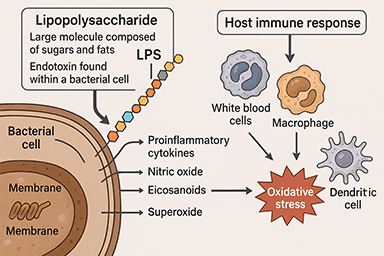
Lipopolysaccharides and Endotoxins
Lipopolysaccharides are large molecules composed of sugars and fats which are endotoxins found within a bacterial cell. LPS is secreted as part of the normal physiological activity of membrane vesicle trafficking and protects the membrane from certain chemical attacks. LPS activates the hosts’ immune response by stimulating white blood cells (i.e., neutrophils, macrophages, dendritic cells) to secrete certain enzymes that deactivate them. Additionally, these WBC’s secrete proinflammatory cytokines, nitric oxide, and eicosanoids, and the resulting cellular response is the release of superoxide, a free radical that causes oxidative stress. This may function as an adaptive host strategy to manage the toxic effects of LPS.
LPS and inflammat…
Louse-Borne Relapsing Fever
Louse-borne relapsing fever (LBRF) is caused by the spirochete, Borrelia recurrentis, and is largely transmitted from person to person by lice. This bacteria is unique because it can alter the proteins expressed on its surface which causes the “relapsing” characteristic symptoms. It initially infects the mucus membranes and then moves into the bloodstream.
Symptoms can include:
1) Fever 2) Malaise 3) Fatigue 4) Cognitive Dysfunction 5) Prolonged QT interval on EKG 6) Jaundice
Generally, this is a more severe infection than tick-borne relapsing fever and is often found in poor, underdeveloped countries such as Ethiopia.

Low Core Body Temp
Low Core Body Temp
Low Core Body Temperature (less than 97.0 degrees F)
#image_title
Many patients who suffer from chronic Lyme Disease and coinfections or chronic complex illness, also suffer from a low core body temperature (less than 97.0 degrees F). Sometimes this cold body temperature is due to hypothyroidism, which is relatively easy to diagnose with blood tests and a thermometer, an easily treated with some combination of T3 and T4 sustained release capsules.
However, sometimes a low core body temperature is due to the build up of toxins in the blood that causes the blood to become thick and viscous and unable to flow through arterial vessels and capillary beds. The lack of proper blood flow results in lowered oxygen conc…
Low Dose Naltrexone (LDN)
Learn about how LDN can help in the treatment of Lyme and other conditions.

Lyme Disease in Dogs
Protect your dog from Lyme disease with essential prevention tips, symptom recognition, and treatment options, backed by expert insights from Dr. Susan Marra.
Lyme Disease Video
Ending Lyme: How Revolutionary Biomolecular Research is the Key to Unraveling Lyme Disease
Menopause & Lyme Disease
Women who have had or have Lyme Disease often have a difficult time during Menopause. They may experience a “flare” in their symptoms due to the declining levels of estradiol and progesterone primarily, but also thyroid hormone, cortisol, DHEA, pregnenolone, testosterone, and growth hormone. Weight gain around the midsection is common for women in perimenopause and menopausal states and can become even more of a problem when Lyme Disease is present due to metabolic dysequilibrium.
The bacteria that causes Lyme Disease, Borrelia burgdorferi, as well as coinfections such as Babesia, Bartonella, Rocky Mountain Spotted Fever, Q Fever, Ehrlichia, etc… initiate the activation of proinflammatory cytokines such as IL-1, IL-6, and TN…
Methylene Blue
Methylene Blue is an old drug (circa 1876) used to treat methemoglobinemia and cyanide poisoning. It is a thiazide dye and turns your urine blue, but generally is very well tolerated. Some patients like to use red spectrum light with methylene blue, especially for treating plaque psoriasis.
It works by converting ferric iron in hemoglobin to ferrous iron. It also has anti-inflammatory properties and is currently under research investigation for the treatment of persistent Bartonella with promising results.
The only caveat is that you must be tested for G6PD (glucose-6-phosphate-dehydrogenase) deficiency to ensure that enzyme levels are normal, prior to beginning treatment.

Morgellons Disease: What You Need to Know About Symptoms, Causes, and Treatment
Morgellons disease is a complex and often misunderstood condition that I’ve been treating for over 20 years. It’s marked by painful skin lesions that may contain colored fibers, and despite the severity of the symptoms, it’s frequently misdiagnosed. As a Seattle-based Lyme disease doctor, I’ve seen how infections like Lyme disease, Babesia, and Bartonella often contribute to Morgellons symptoms. This article aims to provide clarity on Morgellons disease, its potential causes, and the treatment options that have proven effective for my patients. For more information about my practice and approach to healing, visit my website.
Caption: Medical Minutes with Dr Marra, Episode 21 Morgellons Di…
Mycotoxins and Mold Exposure
Mycotoxins and mold are metabolites of fungal organisms that are toxic to the human body and exposure can be present in both food and air. Two food-borne mycotoxins are Aflatoxin and Ochratoxin. Aflatoxin is produced by many species of Aspergillus fungi and can be found in soil, peanut butter, olive oil, and some cosmetics. Ochratoxin is also produced by Aspergillus species and can be found in cereal, coffee, and wine. It too has disease-causing effects on the body and has a half-life of 35 days.
In September 2012, Dr. Dennis Hooper, director of Realtime Laboratories in Carrollton, Texas, presented information on the new technology available to investigate mycotoxins and mold exposure in patients. He has developed a urine PCR test for i…
Natural Killer Cells
Natural killer cells (CD57 cells) were first noted by a Swedish researcher, Rolf Kiessling in the 1970s, and are a type of T cell, representing a significant component of the innate immune system.
CD57 cells do not produce antibodies against a foreign pathogen, but rather, are activated by chemical messenger molecules derived from macrophages including interleukin- 2, 12, 15, and 18, and interferon. Natural killer cells circulate in the blood and possess cytotoxic properties whereby their primary responsibility is to “kill” viral and bacterial pathogens.
Recently, natural killer cells have also been implicated in autoimmune diseases. Autoimmune illness is characterized by the patient’s own immune system attacking “s…
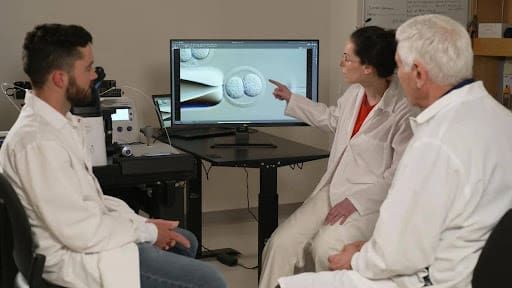
New Nantucket Lyme Disease Research: Targeting Tick-Borne Illness at the Source
New Nantucket Lyme disease research uses genetic modification of white-footed mice to reduce tick-borne infections. Learn how this novel approach works.
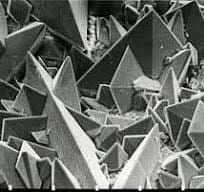
Oxalates and Kidney Stones
Oxalates are molecules found in certain foods such as spinach and cashews that are formed as the combination end product of several amino acids such as serine, glycine, and ascorbic acid, that can combine with calcium (a naturally occur ion in the blood also from food) in the blood to form calcium oxalate crystals. Foods that contain more than 100g of oxalates per serving include (but this IS NOT an exhaustive list):
Beets
Rhubarb
Brussel Sprouts
Carrots
Spinach
Tofu
Rice Bran
Almonds
Snap Beans
Cashews
Soybeans
Quinoa
Blackberries
Blueberries
Figs
Plum
Raspberry
Tangerine
Sweet Potatoes
Eggplant
Kale
These oxalate crystals are needle shaped crystals ca…
Oxidative Stress and Mycotoxins
Mycotoxins can cause oxidative stress. Oxidative stress is an intracellular imbalance that occurs in chronic disease where reactive oxygen species are not readily removed and detoxified into more inert compounds in the body. This results in cellular dysfunction leading to disease. The production of free radicals and peroxides are chemicals that cause intracellular organelle damage and prevent normal cellular function. Mycotoxin exposure significantly increases oxidative stress and therefore reduces glutathione. When glutathione is low, disease ensues.
However, glutathione can be replenished by an oral paste or liquid very effectively. When glutathione levels return to normal, proper cellular function ensues and often disease-causing sym…
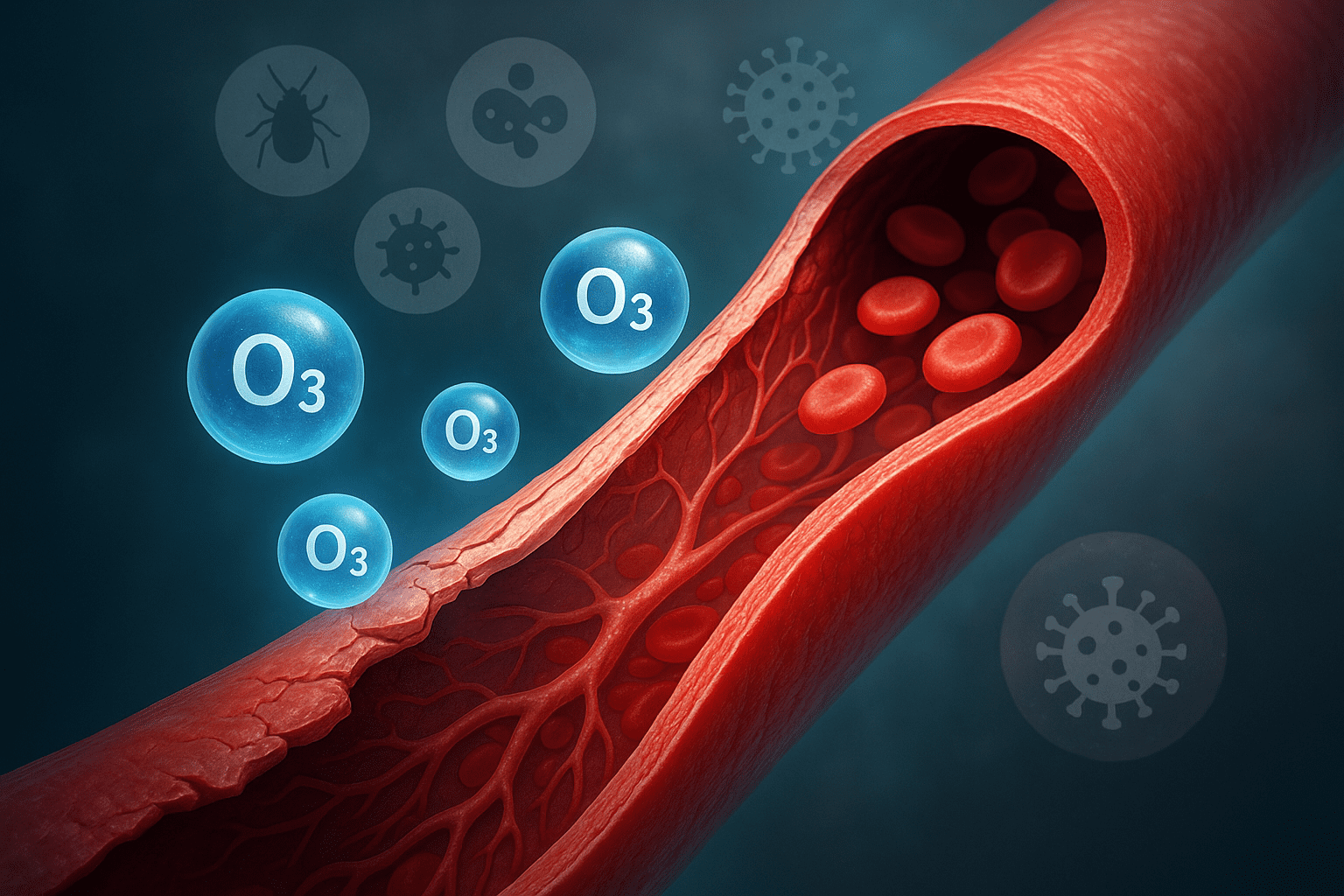
Ozone for Tick-Borne Disease, Mold Illness, and COVID
Ozone (O3) is a powerful oxidant gas and is found in the earth’s atmosphere. It has antimicrobial properties and may be beneficial in the treatment of infections.
I personally went to Mexico 18 years ago to receive ozone treatment after finishing antibiotic therapy for Lyme Disease and Bartonella. While I had high hopes that the ozone would completely eradicate my infections, I was wrong. Subsequent testing after treatment yielded positive Lyme Disease and Bartonella tests.
I do, however, encourage patients to do an 8 or 10 pass ozone therapy AFTER finishing antimicrobials, antifungals, or antivirals, because I believe that ozone heals the endothelium of vessels that were damaged by infection and/or mycotoxins. Please, remember: OZON…

PANDAS & Lyme Disease
PANDAS & Lyme Disease
(Pediatric Autoimmune Neuropsychiatric Disorder Associated with Streptococcal Infections)
PANDAS is a term used to describe pediatric patients who exhibit a myriad of movement and psychiatric symptoms related to the exposure to strep infection. Interestingly, these patients symptoms often become worse at times during the school year when strep infection in the classroom is rampant, often during the winter months.
#image_title
Symptoms of PANDAS include:
Sydenham Chorea movements
Motor Tics
Anxiety
Sensory Motor Deficits
Behavior Regression
Deteriorating School Performance
Depression
Emotional Lability
Urinary Symptoms
Sleep Disturbances
ADHD
Impulsivity
Restlessne…
Pediatric & Adolescent Lyme Disease
Tick-borne diseases are a 21st-century epidemic in most geographical areas of the United States and Europe, China, Japan, Australia, South America, and Africa. Greater awareness regarding the spread of these diseases is gaining momentum as we enter the “Decade of the Microbe.” However, the multidimensional impact of Lyme disease in particular on our most vulnerable population, children, is still under substantial scrutiny by the medical establishment despite numerous scientific articles demonstrating clear and contrary evidence.,
Children are among the most vulnerable to tick-borne illness simply because they spend time outdoors, play low to the ground where ticks often reside, and are more likely to come into physical conta…
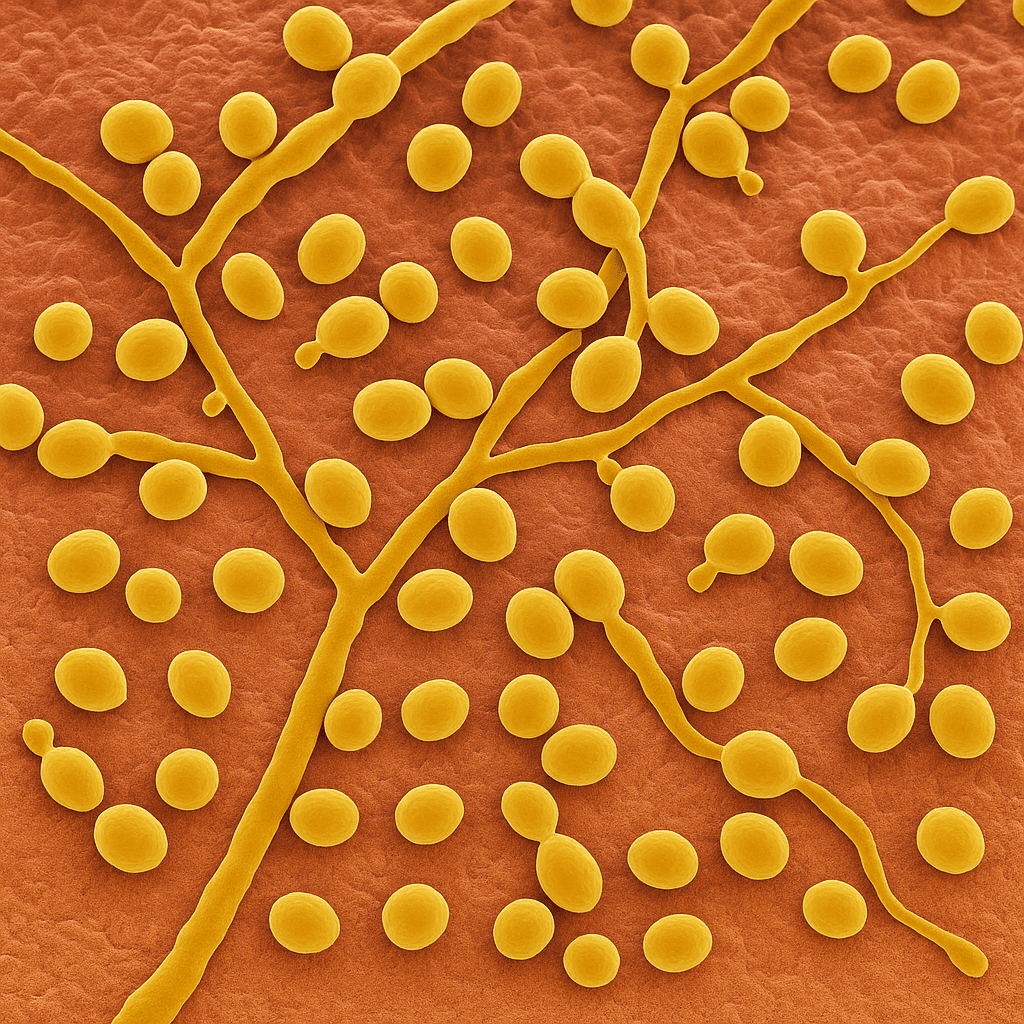
People with TBD have more yeast infections
The Yeast Infection
A yeast infection (Candidiasis) is a fungal infection often caused by Candida albicans. Various reasons that fungal infections occur include: excess sugar and carbohydrates in the diet, alcoholism, mold exposure, allergic constitution, improper replenishing of intestinal flora with probiotics (i.e.,Lactobacillus, Saccromyces) long term use of antibiotics, corticosteroid use, and autoimmune illness. Symptoms associated with a yeast infection are: gas, bloating, cramps, diarrhea alternating with constipation, abdominal pain, brain fog and cognitive difficulties, fatigue, strange rashes all over the body, circular vague rashes on the abdomen under the bra area, anal itching, red raised “beefy” and itchy rashes, odo…
Photobiomodulation (PBM) Information Sheet
Photobiomodulation (PBM) Information Sheet
September, 2024
Molecular Mechanisms of Alzheimer disease:
decreased cognitive functioning
decreased capacity to learn new information
decreased memory capacity
decreased ability for decision making
decreased language abilities
decreased motor activities
decreased mitochondrial functioning due to decreased enzyme cytochrome c oxidase (CCO) activity
abnormal deposition of Beta-Amyloid protein in the brain
imbalance of mitochondrial fusion and fission proteins
increased neuronal inflammation by microglial and astrocyte cell activity
induction of heat shock proteins
induction of cyclooxygenase pathway
NF Kappa beta stimulated neuritis
increased oxidati…
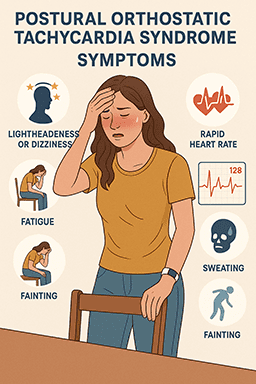
Postural Orthostatic Tachycardia Syndrome (POTS)
POTS (postural orthostatic tachycardia syndrome) is a serious complication of chronic tick-borne diseases, and often renders patients bedridden for many months. POTS is generally found in more women than men suggesting a hormonal component to the etiology as well. Typical symptoms of POTS include:
Fatigue
Headache
Tremors
Syncope (fainting)
Dizziness
Poor ability to concentrate
Exercise Intolerance
Lightheaded
Heat intolerant
Shortness of breath
Cold Extremities
Low blood volume
Drop in blood pressure on standing
Elevated plasma norepinephrine
Mast Cell Activation Syndrome
These symptoms indicate dysregulation of the autonomic nervous system between the brain and the heart. Somehow and not…

PTSD and Lyme Disease
Most patients with chronic illness who have been repeatedly misdiagnosed, and virtually unheard, wind up with some form of PTSD and adrenal exhaustion. The fight to be heard, find a competent practitioner, receive proper and attentive care, is no small feat in this fast paced world, and is much more difficult for the severely ill. Sadly, this component of Lyme Disease is not very well recognized. This is really similar to the PTSD a soldier experiences once he/she is home from a war. The emotional, physical, psychological, and spiritual toll on the body is very significant. Although the war might be over, there are substantial lingering effects of the struggles that occurred during healing.
I encourage my patients to seek counseling…
Q Fever
Q Fever is a vector-borne disease caused by the bacteria, Coxiella burnetii, and is found in cattle, sheep, goats, cats, and dogs. Humans can get infected by inhaling endospores, ingesting the milk, urine, or feces of an infected animal, or from a tick bite.
Patients with Q Fever generally develop fever, chills, fatigue, and muscle pain. If not treated properly, the infection can become chronic and require long-term antibiotic treatment, including doxycycline and Plaquenil.
It is thought to have been used as a biological weapon at one time. It is highly infectious, with as little as one organism needed to cause clinical infection, making it an attractive organism for use in biowarfare.
Recommendations for Infected Patients with Tick-Borne Disease
DO NOT donate blood. You have been infected with a bacteria that can live in the blood, and therefore can be passed onto someone else.
Carry a card in your wallet indicating that you have Lyme Disease (and co-infections if applicable) and the drugs that you are taking. This is important to alert health professionals in the case of an accident.
If you have having elective surgery, let your surgeon(s) know so that they can be aware. If you need blood, I would suggest auto-transfusion (you receive your own blood for a transfusion, instead of a separate donor) if necessary.
DO NOT have unprotected sex with your partner. These infections are thought to be sexually transmitted. Although there is little data to support this, we do…
Resources for Lyme Disease and Chronic Illness
When dealing with chronic illness, the more information, and support that you have the better. Below, you will find some resources for Lyme disease, chronic illness, and more that may be helpful and provide a lot of additional information.
American Association of Naturopathic Physicians
Bastyr University
Bryan Rosner’s Website
California Lyme Disease Association
Canadian Lyme Disease Foundation
Columbia University Lyme Disease Research Center
Dr. Jones Kids
Fry Laboratories
Igenex
International Lyme and Associated Diseases Society
Lyme Disease Action UK
Lyme Disease Association
Lyme Disease Books
Lyme Disease Medical Literature Summaries
Lyme Induced Autism
Lyme Times
Open…

Revolutionize Your Healing with Firefly Red Light Laser Technology
Experience deep healing with Firefly red light laser therapy, now available at Dr. Marra’s office on the Kitsap Peninsula.
Rocky Mountain Spotted Fever
Rocky Mountain Spotted Fever (RMSF) is considered the most serious tick-borne illness and is caused by the bacteria, Rickettsia rickettsii. It can be deadly if not treated with the proper combination of antibiotics and supplements. It was identified in the Rocky Mountains in the 1800s but is also found in Western Canada and parts of Central and South America.
It is primarily carried by the American dog tick, Rocky Mountain wood tick, and the brown dog ticks. Symptoms of Rocky Mountain Spotted Fever include lacy rash, headaches, high fever, nausea, muscle pain, poor appetite, abdominal pain, joint pain, and conjunctivitis. Typically, the rash starts at the extremities and moves to the trunk as small, flat, pink non-itchy macules.&n…
Sleep and Insomnia
Sleep is critical for healing, particularly deep sleep. During sleep, the body alternates between REM sleep and non-REM sleep. During REM or deep sleep, you dream, and dreaming is thought to be the way that the mind processes information. During sleep, most of the body’s systems are in an anabolic state, helping to restore the immune, nervous, muscular, and skeletal systems. Sleep is also the time that the brain detoxes through its glymphatic system.
Insomnia is a common symptom of tick-borne disease and is characterized by an inability to fall asleep, stay asleep, and wake refreshed. This has to be treated right away so that you can get 8-10 hours of restful sleep a night.
There are many supplements that…
Systemic Inflammation and Cytokines
Historically, the defining features of inflammation include rubor (redness), calor (warmth), tumor (swelling), and dolor (pain), and there is a distinction between acute and chronic inflammation. Acute inflammation compromises the early response to an injurious agent and is a defensive response that fosters repair of the damaged site. Chronic inflammation results from stimuli that are persistently damaging to tissues. Inflammation is a way that the body reacts to infection, irritation, or other injury and is considered a nonspecific immune response. The inflammatory response directs immune cells to the site of injury or infection and is manifested by an increased blood supply coupled with vascular permeability…
The Bacterial Biofilm
The Bacterial Biofilm is a sticky, viscous negatively charged substance similar to “bacterial slime”, composed of mucopolysaccharides and DNA, and stabilized by minerals and probably heavy metal molecules. Plaque found on teeth surfaces is an example of a biofilm. Biofilm adheres to aqueous environmental surfaces like vascular endothelium and proliferates. Most types of bacteria secrete some form of this substance which allows them to dwell in the vasculature and extracellular matrix of tissues while also living in a community. By utilizing cell adhesion molecules, the bacteria bind to surfaces, “seed”, and form new colonies allowing for continued proliferation.
A biofilm community can be comprised of more than o…

The facts about Chronic Fatigue Syndrome
Chronic Fatigue Syndrome (CFS) is a complex condition marked by extreme exhaustion, poor stamina, cognitive issues like brain fog and memory problems, and unrefreshing sleep. Often accompanied by flu-like symptoms, muscle and joint pain, sore throat, and tender lymph nodes, CFS may mimic infections like Lyme disease or strep throat. A key feature is post-exertional malaise (PEM), where symptoms worsen 24–48 hours after physical or mental activity. Many patients also experience hormonal imbalances, poor stress response, and disrupted sleep cycles. Support may include thyroid and adrenal hormones, melatonin, or prescription sleep aids.
The Importance of Probiotics
The importance of probiotics while undergoing Lyme Disease treatment cannot be underestimated. The human microbiome is composed of trillions of different bacteria that live harmoniously and perform various necessary physiological functions, especially in the intestines. These bacteria have specific nutritional needs just as we do to sustain life. Additionally, endigenous bacteria generally do not cause disease, unless the bio-terrain is altered by other infectious organisms, antibiotics, or poor diet. In this case, your “garden” becomes a “garden of weeds.”
While antibiotics are necessary to eradicate Lyme Disease and co-infections in most patients, great care should be taken to maintain a healthy microbiome while undergoing treatment…
The Importance of Probiotics
The importance of probiotics while undergoing Lyme Disease treatment cannot be under estimated. The human microbiome is composed of trillions of different bacteria that live harmoniously and perform various necessary physiological functions, especially in the intestines. These bacteria have specific nutritional needs just as we do to sustain life. Additionally, endigenous bacteria generally do not cause disease, unless the bio-terrain is altered by other infectious organisms, antibiotics, or poor diet. In this case, your “garden” becomes a “garden of weeds.”
While antibiotics are necessary to eradicate Lyme Disease and co-infections in most patients, great care should be taken to maintain a healthy microbiome while undergoing treatment…

The Use of Red Light Therapy for Lyme Disease in Healing Tick-Borne Diseases and Mycotoxin Illness
Learn how red light therapy for Lyme disease aids healing, reduces inflammation, and boosts energy in chronic illness. Read more!
Tick Removal
Instructions for Tick Removal.
Any tick that is attached to the skin should be removed carefully and quickly using the following guidelines:
Using small tweezers, grasp the head of the tick at the skin and hold firmly without squishing it, and pull STRAIGHT OUT without twisting or turning it. There may be some resistance as ticks secrete a cement-like substance that allows them a tight hold on the skin site of attachment.
Place the tick in a small jar and save it to send to Igenex, Inc. for PCR/DNA testing of the tick for Lyme Disease.
NEVER squeeze or burn a tick.
NEVER use any ointments at the site of the tick bite.
Clean the tick bite site thoroughly with alcohol.
Phone your physician and make an appointment immed…
Tick-borne Relapsing Fever
Tick-borne relapsing fever (TBRF) is a spirochetal infection caused by Borrelia hermseii, Borrelia miyamotoi, and several other less well-known bacterial species. Tick-borne relapsing fever is found in Africa, Spain, Saudi Arabia, Asia, Canada, and the western United States. Rodents are the primary reservoir and ticks are the likely vector for this disease. Tick-borne Relapsing Fever is best diagnosed by PCR testing.
Symptoms of TBRF include:
Fever
Malaise
Cognitive Dysfunction
Fatigue
Body Aches
Other transient and nebulous symptoms vary from patient to patient

Ticks in Summer 2025: What You Need to Know
Learn how ticks in summer 2025 are impacting health nationwide—and how to protect yourself from Lyme disease and more. Read More!

Ticks in Washington State: What You Need to Know and How to Protect Yourself
Learn where ticks are found in Washington, how to protect yourself, and expert Lyme disease care with Dr. Susan Marra.

Topical Pain Relief Options
Topical Pain Relief Options
Topical pain relievers can be a helpful part of managing discomfort caused by inflammation, especially when systemic treatments aren’t tolerated or additional support is needed. Dr. Marra often recommends the following trusted products for localized relief:
🌼 Arnica Montana 6X (Homeopathic)
A natural remedy known for its anti-inflammatory and analgesic properties. Often used to relieve:
Bruising
Muscle soreness
Joint pain
💨 Bengay Pain Relieving Cream
Recommended especially for MCAS (Mast Cell Activation Syndrome) due to its menthol and methyl salicylate content. It may help:
Reduce localized inflammation
Relieve muscle and joint stiffness
Improve circulati…

Understanding Fibromyalgia (FM)
Fibromyalgia (FM)
Understanding the Underlying Causes of Widespread Pain and Fatigue
Fibromyalgia (FM) is a modern diagnostic term used to describe a constellation of symptoms—most notably, widespread muscular pain and heightened sensitivity at specific tender points throughout the body. While pain may begin in a localized area such as the neck or shoulders, over time it typically spreads and becomes more generalized.
🧠 Common Symptoms
FM pain is often described as:
Burning, radiating, gnawing, sore, stiff, or aching
Fluctuating based on weather, activity, sleep, and stress
Accompanied by fatigue, often severe, affecting daily function
Many patients describe feeling “flu-like”, even in the absence of an ac…

Understanding Hypermobile Ehlers-Danlos Syndrome (hEDS)
Understanding Hypermobile Ehlers-Danlos Syndrome (hEDS)
Hypermobile Ehlers-Danlos Syndrome (hEDS) is a genetic disorder that affects the body’s connective tissues, specifically collagen. Collagen is a crucial protein that provides structure and elasticity to skin, joints, blood vessels, and organs. In people with hEDS, a defect in collagen production results in weakened connective tissues, leading to a variety of symptoms, including hypermobile joints, fragile skin, joint pain, and easy bruising.
Dr. Marra is currently diagnosed with hEDS, which gives me a deep understanding and comprehension of its impacts on day-to-day life. It also enables the ability to diagnose it more accurately. Watch the Medical Minutes video below for a full…
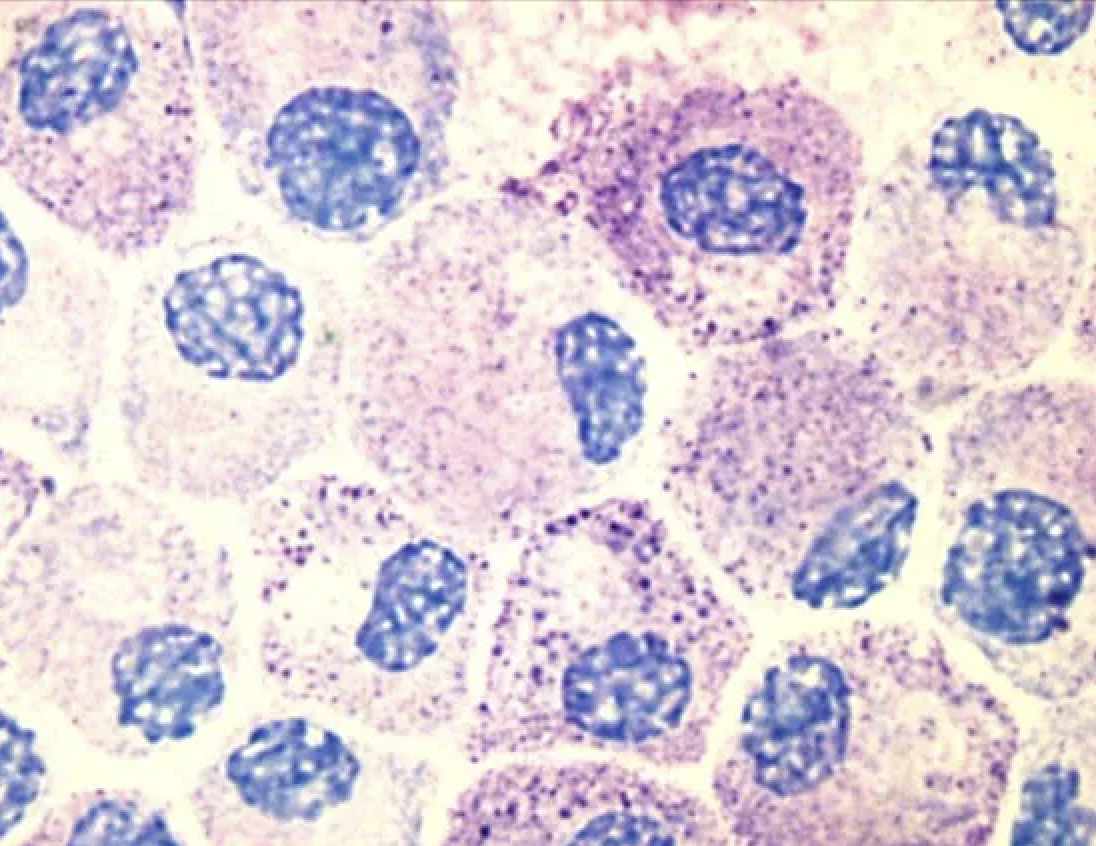
Understanding MCAS
Learn about MCAS (Mast Cell Activation Syndrome), its symptoms, triggers, and treatment options with Dr. Susan Marra. Discover how early diagnosis can improve your health.
Vector-borne Bacterial Infections
Vector-borne bacterial infections such as Lyme disease can be a serious infection caused by Borrelia species, also known as a spirochete, which is transmitted via a tick bite (perhaps also flea and mosquito bites). Many strains of Borrelia exist, and some do not cause disease. Nonetheless, there are likely greater than 100 strains of pathogenic Borrelia and probably more as yet unidentified. Certainly, geographic strain differences exist, especially with regard to continents, as the disease-causing bacteria have also been documented in Europe, Australia, China, South America, and Africa. Lyme disease and co-infections are most probably ubiquitous and found on every continent in the world.
Below is a map showing the averag…

Washington Ticks in Winter: What You Need to Know
Washington ticks in winter remain active due to warming temperatures. Learn how to protect yourself with natural repellents and year-round prevention tips.

Why Authentic Clinical Excellence in Medical Matters for Lyme Disease and Mycotoxin Illness Treatment
Why Authentic Clinical Excellence in Medical Matters for Lyme Disease and Mycotoxin Illness Treatment
When it comes to managing complex chronic conditions like Lyme disease or mycotoxin illness, it’s crucial to seek out clinicians who demonstrate authentic excellence in their field. Unfortunately, many individuals end up with inadequate care because anyone can claim to treat Lyme disease without necessarily having the knowledge or expertise to do so effectively.
As a doctor who has been in the field for over 32 years, I have seen the fallout of this all too often. Patients who are misdiagnosed can receive improper treatment simply because their doctor doesn’t have the experience to accurately interpret diagnos…
